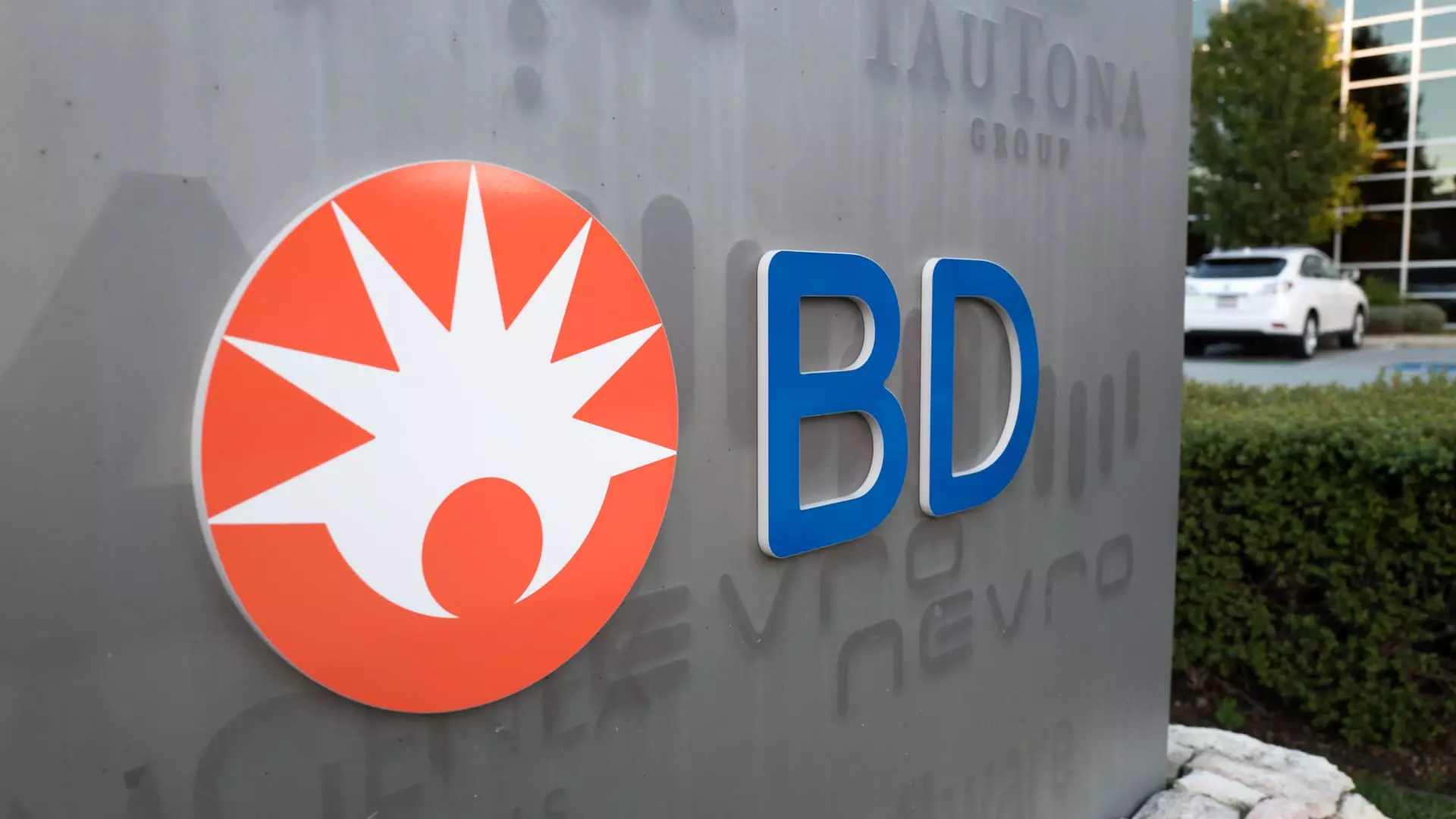Becton Dickinson (BDX) stands as a prominent player in the medical technology sector, offering a diverse portfolio that caters to healthcare institutions, pharmaceuticals, life sciences, and clinical diagnostics. Its substantial market capitalization, approximately $66.65 billion, reflects its pivotal role in the medical supply chain. The company’s two primary segments—MedTech and Life Sciences—exhibit distinct growth trajectories and financial characteristics, highlighting an internal dichotomy that may be ripe for restructuring.
Activist investor Starboard Value has recently set its sights on Becton Dickinson, advocating for the separation of its Life Sciences division from the MedTech business. Starboard’s extensive experience and success in optimizing operational efficiency across various sectors lend significant weight to its arguments. With an impressive track record, including a remarkable return of 32.96% in previous campaigns, Starboard seeks to unlock value in BDX through strategic separation. As medical technology continues to evolve, the misalignment between the two divisions raises critical questions about management focus and resource allocation.
The Becton Dickinson enterprise is partitioned mainly into two segments: MedTech, which focuses on advanced medical delivery systems, and Life Sciences, dedicated to diagnostic technologies. The MedTech division generates substantial revenue, buoyed by the growing adoption of infusion pumps and prefilled syringes—a market that has surged alongside the upswing in GLP-1 medications. In contrast, Life Sciences operates in a more stable, low-growth market yet boasts higher profit margins.
A pivotal issue lies in the perception of growth potential; the MedTech sector, with its mid-single-digit growth rate, stands distinct from the Life Sciences division, which is experiencing only low-single-digit expansions. As a result, MedTech’s valuation, pegged at around 13 to 14 times EBITDA, contrasts sharply with Life Sciences’ premiums, hovering above 20 times EBITDA. This valuation discord signals a pressing need for the company to reevaluate its positioning.
Starboard Value’s proposal for Becton Dickinson is compelling and straightforward: spin off the Life Sciences division. Such a move aligns with market expectations and could dramatically enhance the stock’s overall value. Should the company proceed with a separation, BDX’s two distinct operations would likely attract different investor bases, providing each segment an opportunity to capitalize on their unique growth dynamics.
If executed correctly, the separation may yield a combined valuation exceeding $110 billion based solely on public market multiples, creating a robust scenario for value generation. The effectiveness of this strategy rests heavily on the ability to motivate management teams specific to each division and to pursue tailored growth strategies, ultimately leading to improved operational efficiency.
Despite the alluring prospects of a separation, potential challenges must be considered. Becton Dickinson’s historical integration means the process of decoupling could encounter operational hurdles. Ensuring that both MedTech and Life Sciences retain essential resources and synergies, particularly in areas like supply chain and regulatory compliance, will be crucial for maintaining business effectiveness during the transition.
Furthermore, while Starboard has demonstrated an ability to effectuate change without seat demands, the effectiveness of its influence may hinge on BDX’s willingness to embrace the recommendations. This collaboration highlights the importance of both parties recognizing the mutual benefits of a strategic split.
As Becton Dickinson contemplates its path forward, the potential for value creation through operational separation appears promising. The strategic fragmentation of its Life Sciences business may ultimately equip both divisions with the autonomy needed to foster innovation and attract investment, catalyzing growth that is tailored to their respective markets.
Becton Dickinson stands at a crossroads—a position that offers the opportunity for profound transformation. If it embraces this pivotal moment and considers the strategic separation advocated by Starboard Value, BDX could not only clarify its operational focus but also enhance its value proposition in the competitive landscape of medical technology. While the path may be fraught with challenges, the potential rewards of such a strategy could fundamentally reshape the company’s future.

